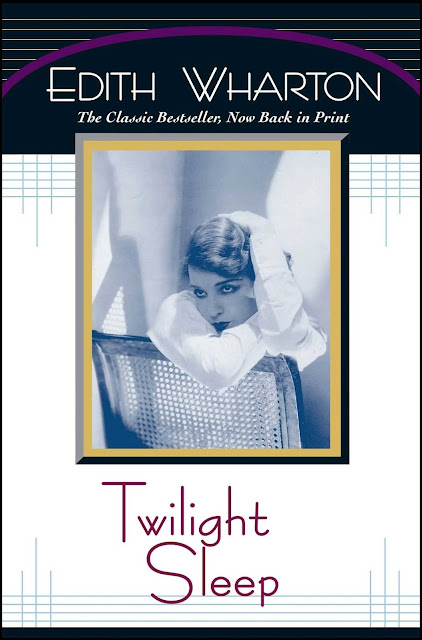Published in 1927, Twilight Sleep by Edith Wharton provides a satirical and scathing look at the Jazz Age. It explores the lives of members of a family in New York City in the 1920s and the characters relationships with one another.
Pauline Manford is a bustling mother whose schedule is packed with cure-alls, fads, religious experiences, and exercise regimens. Beyond all that, she’s occupied by her two children, husband, ex-husband, speeches, parties, and dinners. The novel opens with a look at Pauline’s schedule for the morning: "7.30 Mental uplift. 7.45 Breakfast. 8. Psycho-analysis. 8.15 See cook. 8.30 Silent Meditation. 8.45 Facial massage. 9. Man with Persian miniatures. 9.15 Correspondence. 9.30 Manicure. 9.45 Eurythmic exercises. 10. Hair waved. 10.15 Sit for bust. 10.30 Receive Mothers' Day deputation. 11. Dancing lesson. 11.30 Birth Control committee at Mrs.--." Pauline’s daily flurry of activity distracts her from her crumbling family.
Pauline is married to Dexter, but has no idea what really makes him happy. She visits her ex-husband, Arthur Wyant, just to look upon him with pity. Her son from her first marriage, Jim Wyant, is married to an irresponsible flapper named Lita. Lita is bored of everything, including her husband. Pauline's daughter, Nona Dexter, is perceptive and very different from her mother. Nona tries to support her family and protects her parents while they neglect to protect her. Meanwhile, she's in love with a married man.
The world in Twilight Sleep is filled with social trade-offs, underhanded plans, masquerades, and deception. Pauline struggles to hide the inappropriate activities of her spiritual advisor because his exercise recommendations took inches off her frame. Meanwhile, the rest of the family pulls strings to keep Jim and Lita's marriage afloat, but when Dexter begins to fall for Lita, can appearances hold up or will the careful order crash down?
The title of the novel refers to a medically-induced state called "twilight sleep" created during childbirth due to the use of the drugs morphine and scopolamine. Combination of these drugs caused a loss of pain (analgesia) and a loss of memory (amnesia). This procedure was popular in New York City in the early 1900s because it caused women to have less pain and little to no memory of giving birth. In Twilight Sleep, the characters rush through life trying to avoid pain, lacking understanding, and missing meanings until they are shaken into awareness.
Edited portrait of Edith Wharton, 1889, Roseti, 297 Fifth Avenue, New York. Public domain, via Wikimedia Commons.
Favorite Quote:
“Nona glanced down absently at her slim young hands—so helpless and inexperienced looking. All these tangled cross-threads of life, inextricably and fatally interwoven; how were a girl's hands to unravel them?”
Related Reviews:
The Reef by Edith Wharton
Summer by Edith Wharton
Purchase and read books by Edith Wharton:




© penciledpage.com







Post a Comment
Share your thoughts